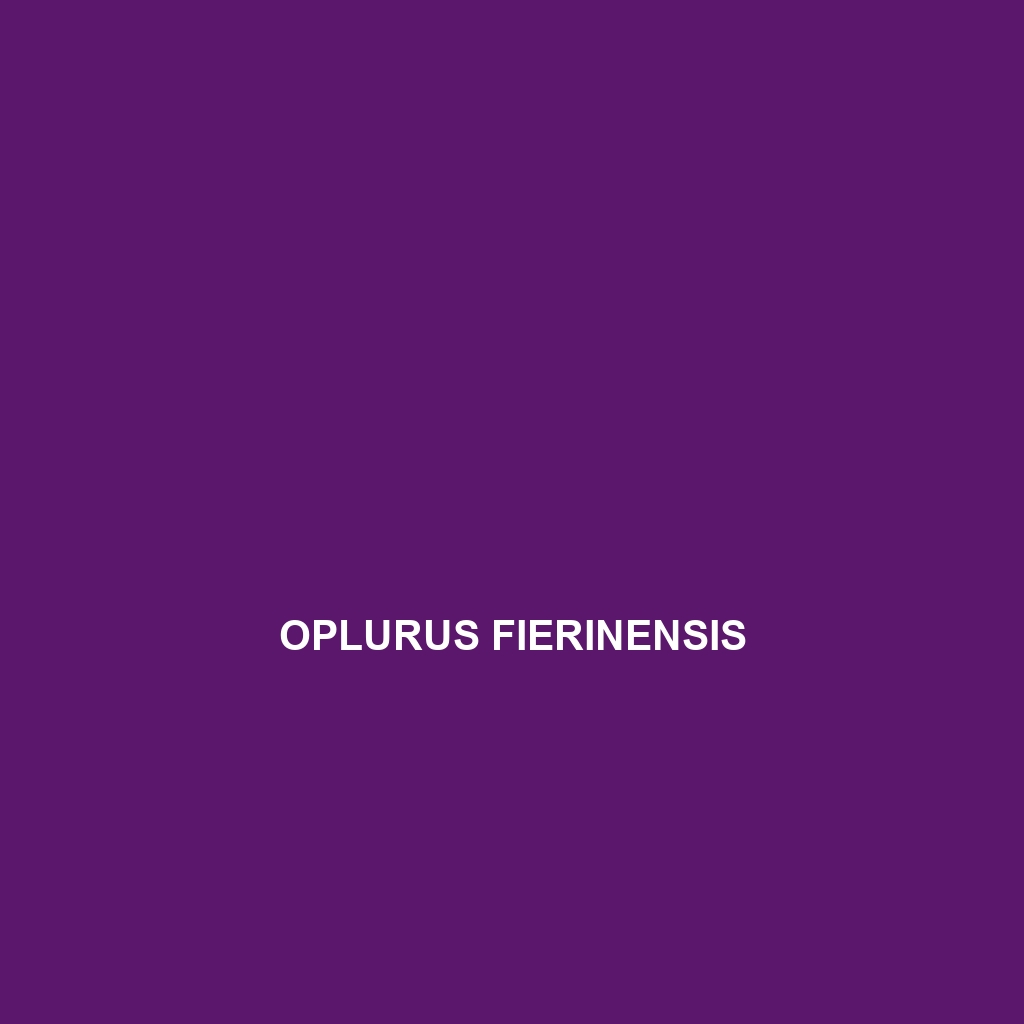Common Name
Oplurus fierinensis
Scientific Name
Oplurus fierinensis
Habitat
Oplurus fierinensis is primarily found in Madagascar, predominantly inhabiting tropical rainforests, dry forests, and savannas. These unique species thrive in a variety of environmental conditions, ranging from humid, lush areas featuring dense vegetation to more arid landscapes. The selection of these habitats is primarily driven by the availability of food sources and suitable nesting sites. Madagascar’s diverse climate and geographical regions provide an ideal environment for Oplurus fierinensis to flourish, as it can adapt to varying ecological conditions.
Physical Characteristics
Oplurus fierinensis exhibits several distinct physical characteristics. This species typically reaches a length of about 30 to 40 cm (approximately 12 to 16 inches). The lizard features a slender and elongated body, complemented by a long, whip-like tail that aids in its balance and agility while navigating its natural habitat. The coloration is often a blend of browns and greens, which serve as effective camouflage against predators. Its skin has a somewhat rough texture marked by small, spiny scales, which can help it blend into the rocky outcrops and foliage of its environment. The combination of its size, coloration, and unique features distinguishes Oplurus fierinensis from other lizard species.
Behavior
Behaviorally, Oplurus fierinensis is primarily diurnal, meaning they are most active during the day. They can often be seen basking in the sun on rocks or branches. Their social interactions are generally solitary, although they may congregate in small groups during mating seasons. Notably, this species exhibits interesting courtship rituals, where males perform elaborate displays to attract females. These displays may include push-ups, head bobs, and color changes that signal readiness to mate. On the other hand, during dry seasons, their behavior may shift to foraging more extensively to secure adequate food supplies.
Diet
The Oplurus fierinensis is described as an insectivore. Their diet primarily consists of various insects such as beetles, ants, and grasshoppers. The lizard employs a sit-and-wait strategy for hunting, making use of its camouflage to ambush prey. While they predominantly feast on insects, they may occasionally consume plant material such as fruits and flowers, which enrich their diet by providing essential nutrients. This flexibility allows Oplurus fierinensis to adapt to changes in food availability in their habitat, contributing to their survival.
Reproduction
Oplurus fierinensis has a seasonal reproduction cycle, typically breeding during the warmer months, from November to January. Females are oviparous, laying clutches of approximately 5 to 15 eggs in sandy soil or leaf litter. The gestation period is roughly 2 to 3 months, after which the hatchlings emerge, fully independent and vulnerable to predators. Parental care is minimal or nonexistent, as the parents do not return to the nest after laying the eggs. The reproductive strategy of laying multiple eggs increases the likelihood of offspring survival through sheer numbers, adapting well in the wild.
Conservation Status
The conservation status of Oplurus fierinensis is currently classified as vulnerable due to habitat loss resulting from deforestation and human encroachment. The degradation of their natural habitats poses significant threats to their population. Conservation efforts are underway, focusing on habitat protection and restoration, as well as raising awareness about the ecological significance of this remarkable species. Organizations working in Madagascar are also implementing strategies to combat illegal logging and agricultural expansion, critical measures for the survival of Oplurus fierinensis.
Interesting Facts
One intriguing fact about Oplurus fierinensis is their remarkable ability to adapt their coloration based on their environment, enhancing their camouflage from predators. Additionally, these lizards can drop their tails when threatened, a defense mechanism that allows them to escape from predators while the tail continues to wriggle, distracting the attacker. This fascinating behavior showcases their evolutionary adaptations that contribute to survival in the wild.
Role in Ecosystem
Oplurus fierinensis plays a crucial role in its ecosystem, primarily serving as both predator and prey. As insectivores, they help maintain insect populations, ensuring a balance in the ecosystem. Their interactions with other species contribute to the complex food web of Madagascar’s biodiversity. Additionally, the lizard’s nesting behavior assists in soil aeration, indirectly promoting healthy plant growth. By serving as a food source for larger predators, Oplurus fierinensis is an integral component of the ecological community in which it resides, underscoring its significance in Madagascar’s unique ecosystems.
